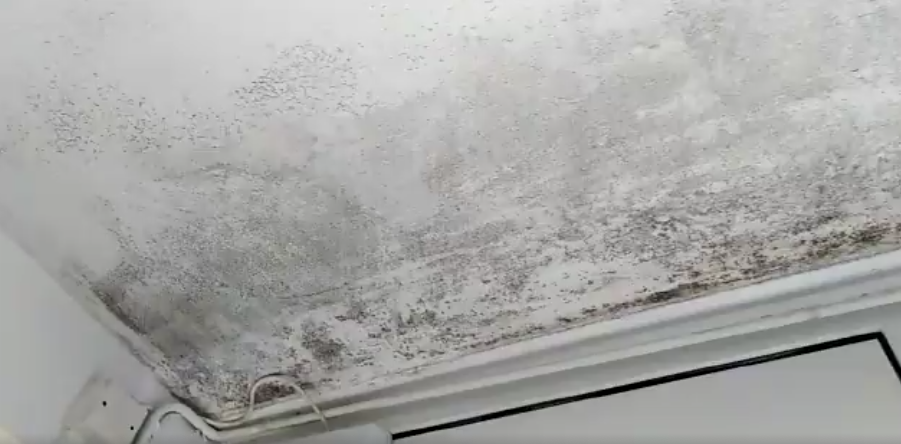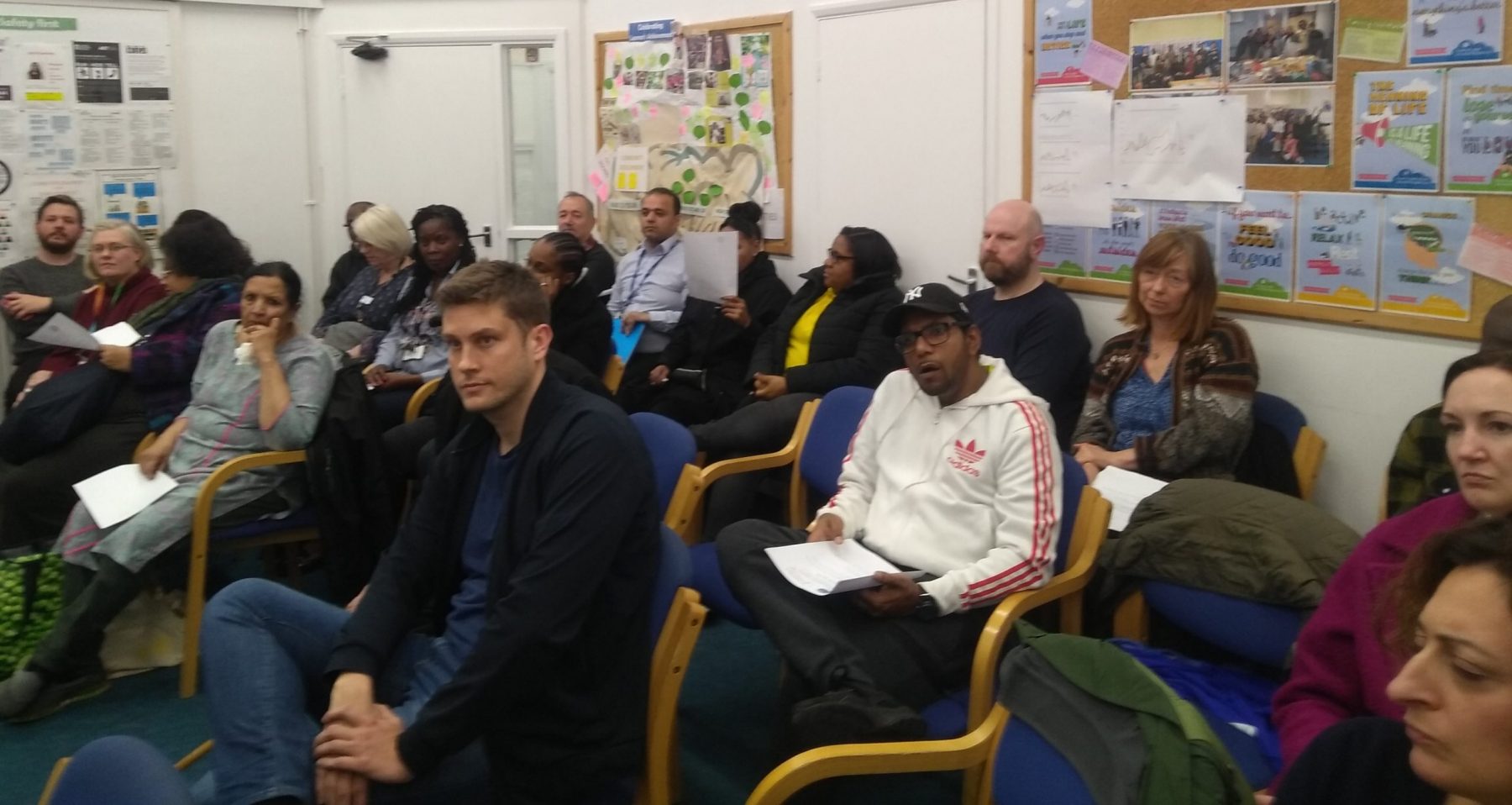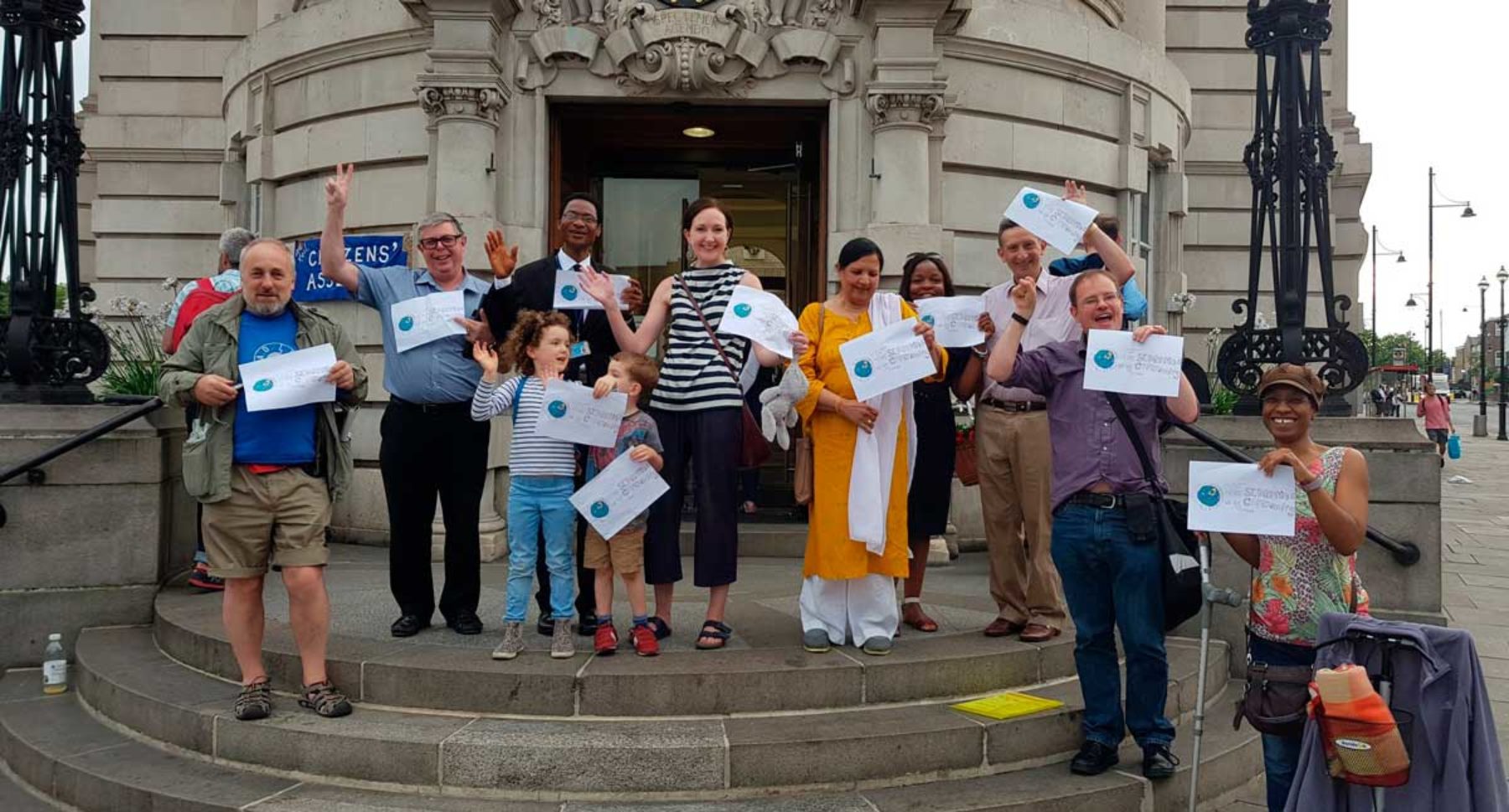An overwhelming majority of those at the meeting were badly impacted by damp and wanted something to be done, but they weren’t sure what action they could take against Metropolitan Housing Trust, the housing association responsible for managing the properties on the estate. For some years, local councillors had been helping individual residents to escalate damp issues to the housing ombudsman once the internal complaints processes with Metropolitan had been exhausted, but with limited success.
The TRA decided to survey their neighbours to see if others in their blocks were impacted, with a view to getting people to take collective legal action on the issue. Through the survey the TRA found that many people in specific blocks had the same kinds of damp issues and, where they had complained, received similar responses from the housing association.
Despite the TRA having identified a collective concern, they realised that collective legal action wasn’t possible because this kind of action against a housing association could only be taken on a case by case basis.

Deciding a strategy
Graham Weston, a community organiser at the High Trees Community Development Trust Social Action Hub, had been supporting St Martin’s TRA with their work on and off for the past six years, helping them to build and leverage their collective power.
In 2018, one of the key leaders in the TRA, Chris Blake, returned to the group as Secretary after some time away and reached out to Graham to find out what was happening with the damp campaign and to explore what possible routes forward the group may be able to take. They knew that a new approach needed to be taken on this long-standing issue of damp.
Graham sought advice on what collective action the St Martin’s community could take from fellow organiser Jonny Butcher of Sheffield’s ACORN Social Action Hub, a community union primarily working with renters. Jonny suggested they demand Lambeth council to commission an independent environmental inspection of all of the affected housing stock in order to put pressure on the housing associations to do the repairs they are legally obliged to.
Chris Blake, Terry Cooper, Terry Curtis, and several others from the TRA had been on the doors in St Martin’s speaking to residents and getting those with damp issues to fill in pro forma damp complaints, while building relationships with a base of community members who were all concerned about the damp problem.
Chris and Graham met to run through the options for the TRA. Two possible routes for action had emerged – for the TRA to support community members to take individual legal action against Metropolitan Housing on a case by case basis, or to take collection action around an independent environmental inspection.
The TRA decided to hold a meeting for all of those impacted to hear about the two options. A local councillor who had been in talks with the TRA around using a law firm they knew to take individual legal action, brought their solicitor to explain what this process would involve. Graham brought the other proposal of taking collective action to the meeting.

Hearing from the solicitors, the residents and tenants became aware of the liabilities they would have in getting individual housing condition surveys and the potential costs incurred if they decided to pull out of the legal process once it had started. They also learned that they could only take legal action on a case by case basis and that there was no class action lawsuit that they could use. The solicitor explained that they would need to do an inspection for each case and that the costs for this would be high. They also confirmed that the alternative, collective strategy for an independent inspection on all of the blocks, was sound.
After considering the resources they had available to them and what their ultimate goal was, the residents, tenants, and councillor all agreed that the best strategy for them was the route to collective power and action through demanding an independent environmental inspection.




